Issue 11 Flipbook
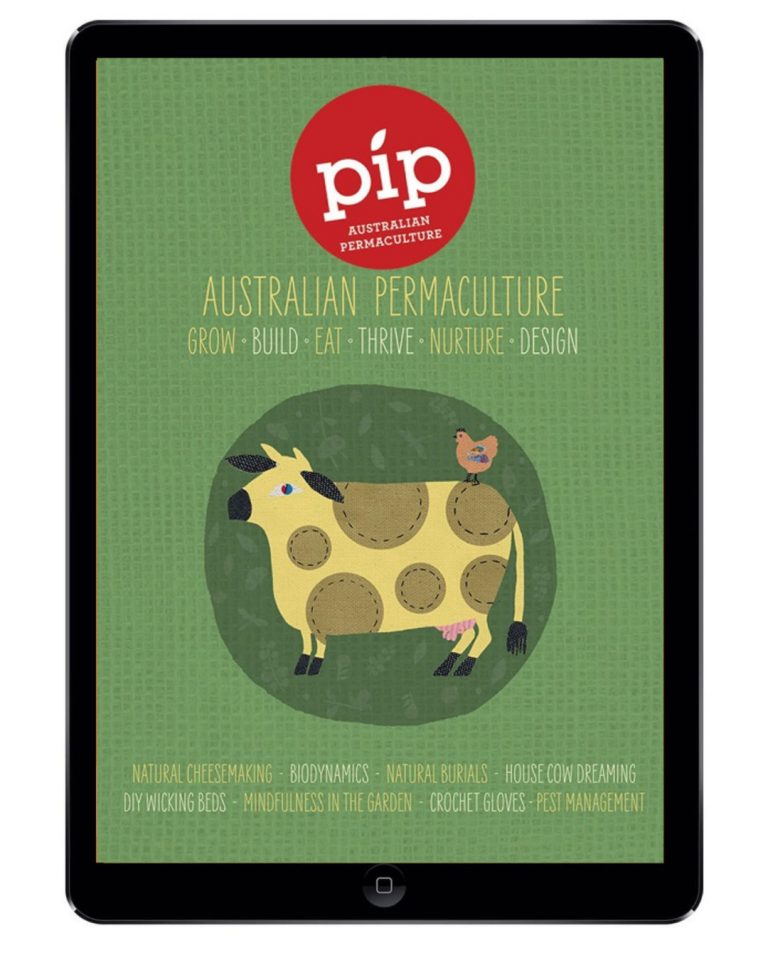
Read Issue 11 as a flipbook

Read Issue 11 as a flipbook
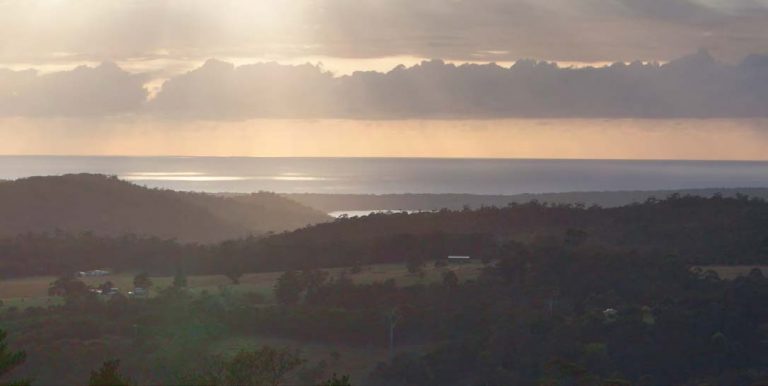
The site of Marg and John Sandefur’s house was a bare paddock on top of a ridge overlooking the ocean. The views were amazing but their location meant they were exposed to some wild weather.
They didn’t do the usual thing of building the house first then consider the landscaping. Instead Marg and John, with the help of Hugh Gravestein and his team at HG Eco Logic Constructions, designed from pattern to detail. By the time they’d moved in they had established shelter belts protecting their home and were eating from their fruit trees.
Marg and John left Melbourne looking for a place that would provide them with an easy lifestyle in a beautiful and peaceful location where they could build a house that was carbon neutral. After travelling as far as Harvey Bay and back, they felt they had found their place in the Bega Valley.
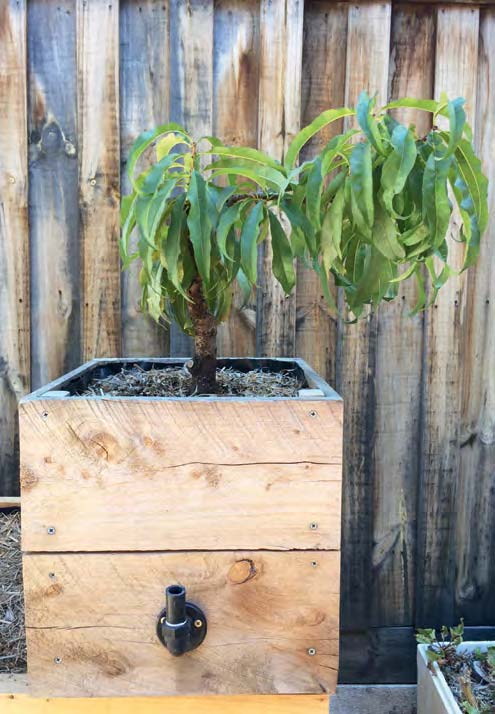
We know plants need water to grow, however understanding when and how much they need can seem like a mystery only ‘green thumbs’ can solve. Enter the wicking bed!
Wicking beds are an innovative vegie bed irrigation solution. They minimise the watering challenge by creating a water reservoir that sits underneath the soil your vegies grow in. A typical wicking bed has a waterproof lining in the bed, on top of which is a layer of small stones. The stones are then covered with water, landscaping fabric is laid on top and the soil goes on top of that. There’s an inlet pipe and a special overflow setup that prevents the water level from rising up into the soil, which would compromise plant health. The water below the soil layer literally wicks up into the soil, maintaining optimal soil moisture levels at all times (so long as you remember to occasionally top up the reservoir).
Wicking beds will typically have less complications than dripline irrigation, will lose less water to evaporation than overhead sprinklers, and take much less time to top up than it would to hand water the same size bed. Knowing when and how much to water is a breeze. All you need to do is simply top up your bed until water flows out of the overflow outlet.
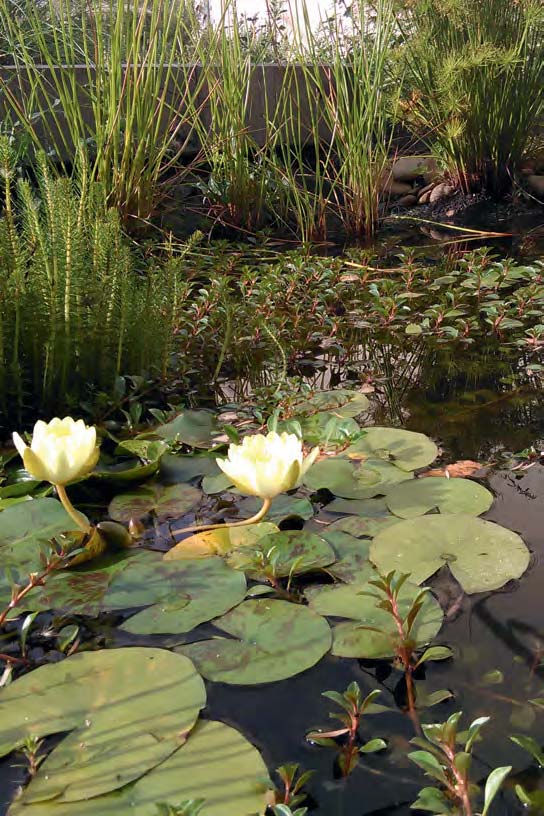
At the gate that opens into the gardens of Seedwell’s St Kilda site, there is a blooming eucalyptus caesia. For the people of the Kulin nation, this gum represents coming of age for young people and for Seedwell it represents a similar idea.
Seedwell is an urban permaculture facility which grew out of St Kilda’s Salvation Army Youth and Family Crisis Accommodation Centre. The Salvation Army Seedwell Collaboration started in 2017, an initiative between The Salvation Army and non-profit organisation Marist180, and is run in conjunction with Jesuit Social Services.
The Seedwell program teaches young people and the broader community permaculture and sustainability skills. It aims to increase awareness about healthy living while also incorporating permaculture’s healing benefits. There are successful kitchen garden programs at both their St Kilda and Brunswick sites, as well as gardening classes and Permaculture Design Courses.
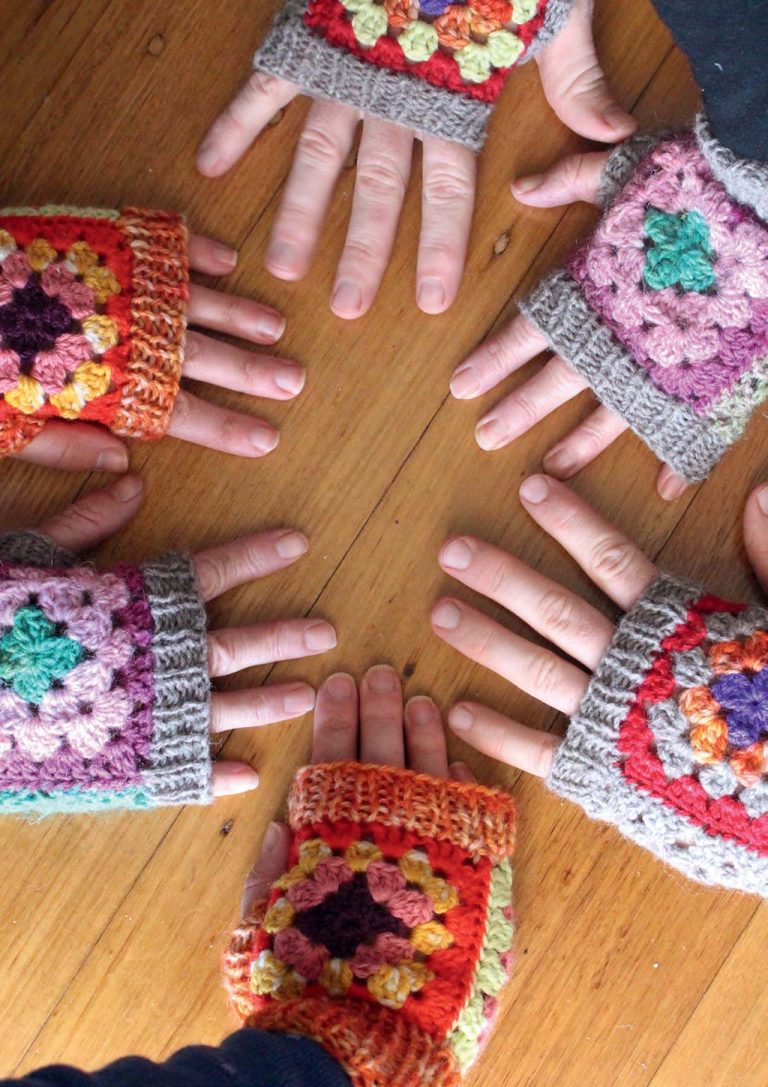
Fingerless gloves are perfect for keeping your hands warm without restricting your fingers. Here is how to make a pair of retro style granny square fingerless gloves. Rather than being strict instructions, this is an inspirational idea kind of pattern.
As is the tradition of making granny squares, leftover and small quantities of yarn are used in this pattern. You’ll need a basic knowledge of crochet and knitting to be able to whip them up.
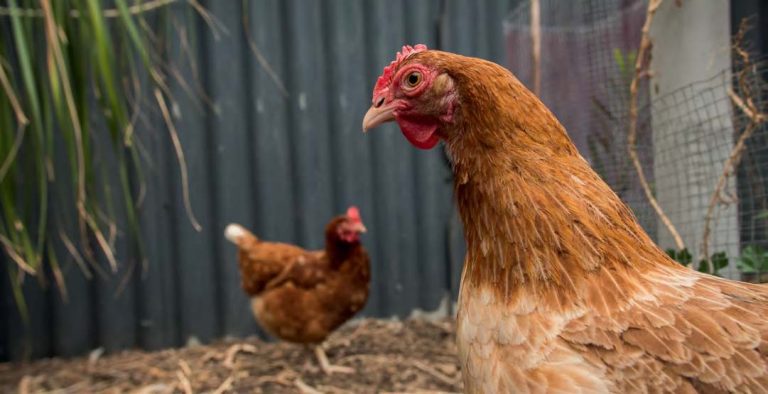
Could you survive if the only fruit and vegies you ate for a year where those grown in your own backyard? Jodie Vennitti from Perth, WA decided to set herself a challenge and try it out?
Jodie’s garden is productive and beautiful, although it hasn’t always been that way. ‘Originally when I bought it, it had no trees, with grass front and back,’ she says of her Coolbellup, Perth backyard. Jodie soon transformed the 728 m2 yard into a thriving permaculture food forest, inspired by the nearby Jetto’s Patch edible garden (profiled in Pip issue 8).
However as Jodie was busy working full-time and looking after her daughters, she wasn’t making the most of her yield. She found herself still buying produce from the shops and discovering forgotten wilting vegies at the bottom of the fridge crisper. So she decided she wasn’t going to buy any fruit or vegetables for a year and instead make full use of what she was growing. ‘I was already spending time in the garden maintaining it, so it was just making sure that as I was going around I was actually harvesting,’ says Jodie.

In Natural Cheesemaking we work with nature, instead of against nature, to make cheese. By using a starter that we make at home, harnessing the rich microbial ecology in raw milk, and honouring traditional cheesemaking methods, we can create cheeses that are more healthy, delicious and complex in flavour.
Cheesemaking should be a simple and natural process. But anyone who’s made cheese according to the standard approach will attest that cheese is no longer created according to any natural considerations. First milk is pasteurised, standardised and homogenised, then monocultures of microorganisms are added back to replace the life taken away by pasteurisation. Genetically modified enzymes are then mixed into milk to cause it to curdle, and the curds left to drain in plastic forms. And all the while cheesemakers need to keep everything sterile to assure that their sensitive laboratory raised cultures aren’t contaminated by rogue microorganisms.

Do you dream of milking your own cow? Having fresh, raw milk available on tap? The thought of all of that warm, frothy sweetness pouring into your bucket is very appealing to many but before you consider bringing a house cow into your daily life, there are a few things you need to consider.
MILKING
A cow will need your care and attention daily, maybe even twice a day. However you don’t have to milk her every day. You can leave your cow’s calf with her in the paddock and choose when to milk. You might choose once a day (in which case you’d need to separate the calf each night) or once a week.
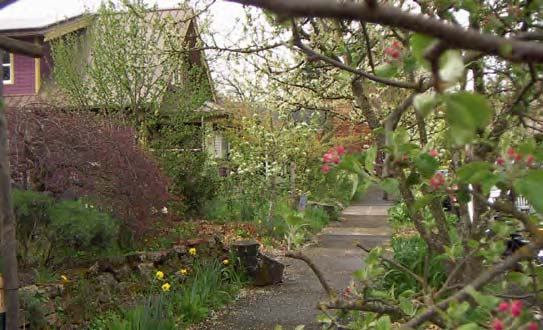
Not far from downtown Portland, Oregon, lives this small intentional community. Foster Village is ‘retrosuburbia’ in action. What started as a single shared community home has now evolved into three houses—an urban community homestead with 11 people living collectively on 1/3 acre.
The villagers started in one house, then bought an adjacent home and have also constructed a straw bale house. They’ve pulled down fences and planted the streetscape. They share many meals each week, look after their permaculture gardens together, keep chickens, ducks and bees, and collectively manage their land and provide for their needs.
They’ve transformed their own lives, are very active in ecological projects in their wider community and are rippling out their good work too by sharing projects with local neighbourhood. Foster Village also offer workshops and tours of their community.

Jodie Lyn Brown’s ‘Cob Heart House’ sits at the top of a hill in Maleny, Queensland, surrounded by a garden full of fruit trees, herbs and vegetables. This beautiful hybrid home (half cob/half timber) is made even more special as it was built by Jodie herself with the help of a natural builder friend and a team of enthusiastic volunteers.
Jodie’s path to her cob house started when she separated from her husband and was living in the small town of Imbil. She’d purchased a large town block in an affordable area and had a house built for her. With four young children she had no plans to build her own home at that time.
Not long after she was drawn to the Crystal Waters Eco Village, where she ended up living for six years. It was at Crystal Waters that she was introduced to earthen homes and natural building. She found the perfect house to rent there, one made using rammed earth construction with the walls having a soft, earthy and nurturing feeling. Jodie was able to visit other earth homes, including rammed earth homes, a strawbale house and many which had been designed using passive solar design principles.